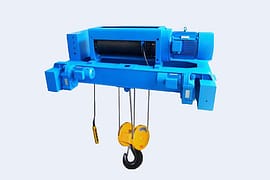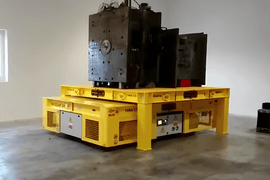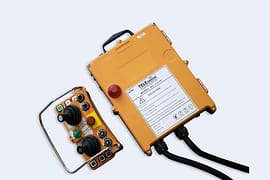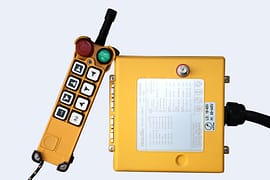Crane Cabin
The crane cabin is a key facility to ensure the safety of crane operators. From crane cab, the operator can monitor the crane, hook, and the cargo's movement in real-time.
The DGCRANE crane operator cab offers ergonomic advantages, visibility, and comfort, making every crane operator feel at home during work. Its well-designed and tidy internal structure, along with various other features, provide a great workplace for crane operators.
Types
- Open crane cabin (for indoor use only, common for bridge cranes, double hoists, and electric single beams);
- Closed crane cabin (suitable for indoor or outdoor sites, common for bridge and gantry cranes, electric single beams);
- Insulated crane cabin (suitable for metallurgical sites, commonly used in casting cranes);
- Capsule crane cabin (mostly a closed structure, often used in European style cranes);
- Cabin door orientation: opens to the left/right side, or at the left/right end. (The side of the cabin with tempered glass is considered the front. When standing on the ground facing the front, a door on the left side is left-opening, on the right is right-opening, on the rear left side is left-end opening, and on the rear right side is right-end opening.)
- Cabin platform entrance direction: enters from the left/right side, or the left/right end. (The side of the cabin with tempered glass is considered the front. When standing on the ground facing the front, an entrance on the left side is left-entry, on the right is right-entry, on the rear left side is left-end entry, and on the rear right side is right-end entry. )
- Crane cabin installation position: left/right mounted. (Facing the side with the main car traveling electrical mechanism, a cabin on the left is left-mounted, and on the right is right-mounted.)
Temperature
- Optimal operating temperature for an open cab: 10~30°C;
- Optimal operating temperature for a closed cab: 5~35°C;
- Optimal operating temperature for an insulated cab: -25~+40°C.
Rane Cabin Configuration
- Fixed crane cabins commonly used and installed under the walkway beneath the main beam.
- Self-propelled crane cabins which run along the main beam track beneath the walkway.
- Trolley crane cabins move with the trolley and are always positioned in front of the load.
Advantages of Crane Cabs
Comfort and Ergonomics
- Comfortable seating: adjustable seats with breathable material, easy access, and a comfortable operating angle with a reasonable field of vision.
- Reasonable size: designed considering the number of personnel and actual working hours, to allow operators to work comfortably.
- Simple, intuitive controls.
- Low vibration, insulation, and maximum noise reduction.
- Adjustable interior temperature, with appropriate and sufficient lighting.
- Crane cabs undergo the strictest quality control with ultrasonic testing, magnetic particle inspection, etc.
- Advanced welding and manufacturing processes, with precisely cut and welded walls and frames, smooth appearance. Doors and windows are well-sealed, waterproof, and shockproof.
- Crane cab glass is made of fully tempered glass for high impact resistance and heat resistance, ensuring operator health and operational safety.
- Floors, interior, decorations, and insulation materials are made of flame-retardant materials.
- Wide field of view to monitor crane and load movements.
- High clarity of vision.
- Easy to keep windows clean.
Features of DGCRANE Crane Cabins
As an exporter of cranes, DGCRANE crane cabins are supplied to customers worldwide and are favored for the following features:
- Cold-rolled steel plate of the cab cut and bent with CNC machines.
- Dustproof sealing of the cab.
- Total paint film thickness of 75~140 μm.
- The cab frame is made of light steel sheet metal components, safe, reliable, novel, and attractive.
- The interior floor of the cab is made of removable steel plates, with anti-slip insulating rubber mats.
- Interior decoration of the cab uses fireproof, waterproof, soundproof, and heat-insulating materials, ensuring operator safety and low noise levels below 70 decibels during operation.
Crane Cabin is Equipped with the Following Components (Standard Configuration):
- Ceiling lights;
- Grilles (footplates);
- Power sockets and strips;
- Insulated floor rubber mats;
- Oscillating fans;
- Coat hooks;
- Fire extinguisher
- Operator’s console
- Cab platform door limit switch
- Electric bell
Applications of Crane Cabins
Crane cabins can be installed on various types of cranes, such as overhead(bridge) cranes and gantry cranes.
They are widely used in industries such as ports, container storage, waste disposal, construction, papermaking, mining, steel, machining, material handling, and shipping.
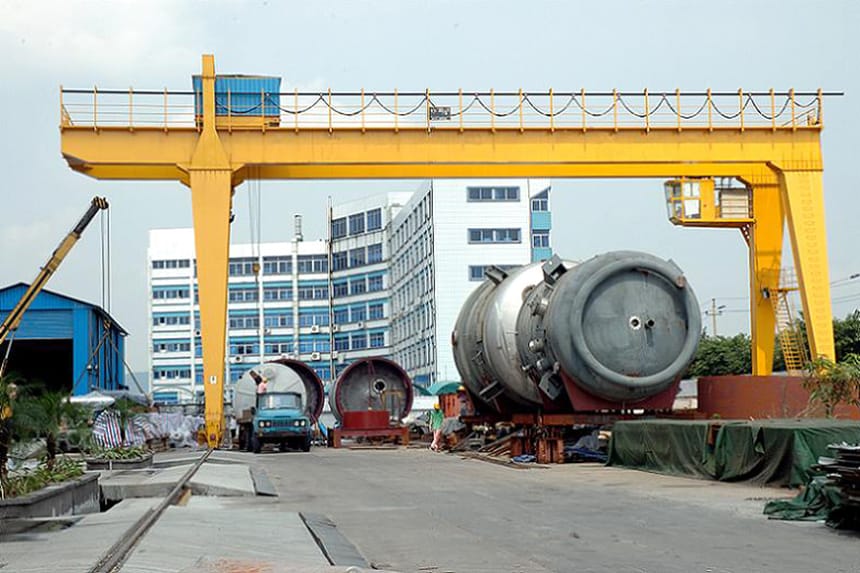



On-Site Installation or Remote Instruction Is Available
Trust building is really hard, but with 10+ years of sales experience and 3000+ projects we've done, both end-users and agents have gained and benefited from our cooperation. By the way, Independent sales rep recruiting: Generous commission / Risk free.














































